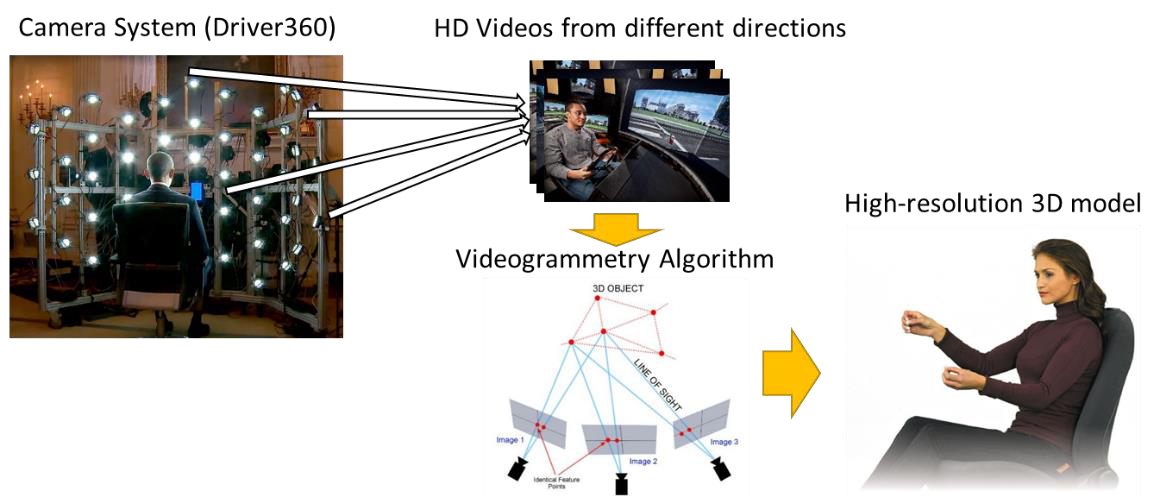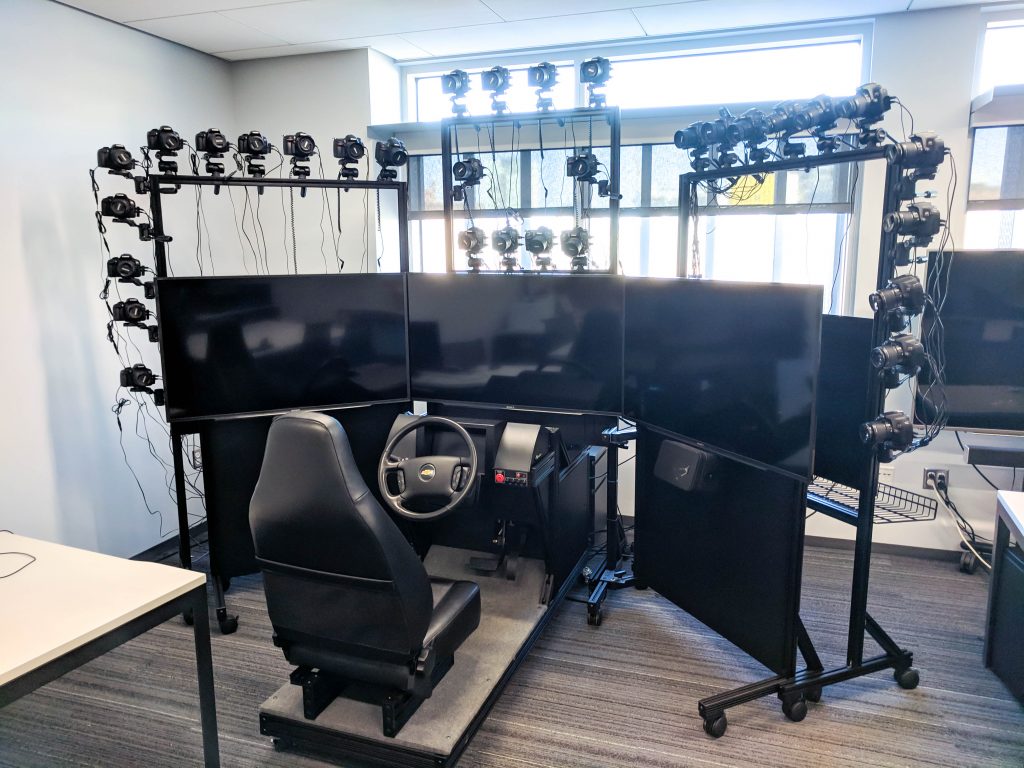Built by the Department of Industrial and System Engineering at The Univerity of Iowa, Driver360 is an innovative 4D scanning system installed in a driving simulator environment.
The University selected ESPER hardware to provide the reliable powering and accurate triggering of 36 DSLR cameras, with minimal latency and no power management issues.
A 4D scanning system to better understand drivers
Professor Stephen Baek, Assistant Professor in Mechanical and Industrial Engineering at the University of Iowa along with his research team were presented with a challenge to develop a portable, modular 4D scanning system compatible with NADAS (National Advanced Driving Simulator) MiniSim, a high-performance driving simulator designed for research, development, clinical and training applications.

The Driver 360 4D scanning system, can capture time-synchronised HD videos of a subject sitting in and operating a driving simulator from different angles. The system then combines the videos, detects visual features and landmarks, and integrates them to reconstruct a 3D model for each video frame. The reconstructed models in the video frames are then combined to construct a dynamic 3D scan of the driver over time.
Triggering multi-cameras with minimal latency
Key to the system was how to trigger all 36 DSLR cameras simultaneously. To this end, efficient relay and broadcasting of a shutter signal to multiple cameras with a minimal latency was the challenge.
The ESPER TriggerBox technology was tested side-by-side with the University’s in-house system.
“We compared their technology with the one we made in-house, and the Esper trigger box showed less latency and had a significantly lower failure rate.”
The University purchased six TriggerBoxes from ESPER. The boxes were connected as a daisy-chain, each box can broadcast signals to up to six cameras and 36 cameras total. One of the boxes was connected to a wired remote control (RC) unit or a computer, and the signal from the RC or the computer is spread out to all the connected cameras.
Providing stable power to 32 DSLR Cameras
Secondly, because 36 DSLR cameras were required to operate in the Driver360 system, power management was an issue. The DSLR cameras by default operate on a lithium-ion battery as a sole power source, but this can be not only inconvenient but also unstable under the 32-camera setup.
The University decided to use a “dummy” battery to achieve a more stable power supply. The DC couplers have the same shape as the original camera batteries but are wired to wall outlets so the cameras have a more stable and persistent power supply. The dummy batteries are then connected to an ESPER PowerBox before being connected to the wall power outlet.
The role of the ESPER PowerBox is to convert the AC current from the wall outlet to a reliable, regulated DC current. Each PowerBox can supply power to up to six DSLR cameras.

The final setup
36 camera face scanning system by Visual Intelligence Laboratory research group.

32 camera face scanning system by Visual Intelligence Laboratory research group.
The new system marks the starting point for many innovative driving research studies. The capability of acquiring high-resolution videos enables immediate new research opportunities for measuring and analysing driving behaviours. Data collected using the system will produce a unique, rich dataset for better understanding drivers.
“Esper was selected based on their incomparable experience and expertise in building multi-camera systems, including the current state-of-the-art systems at Hollywood studios, video game companies, etc… and has the leading technology amongst the very few that are available in the market.”
Professor Stephen Baek, Assistant Professor in Mechanical and Industrial Engineering at the University of Iowa
Learn more about ESPER TriggerBox and PowerBox
More interviews: